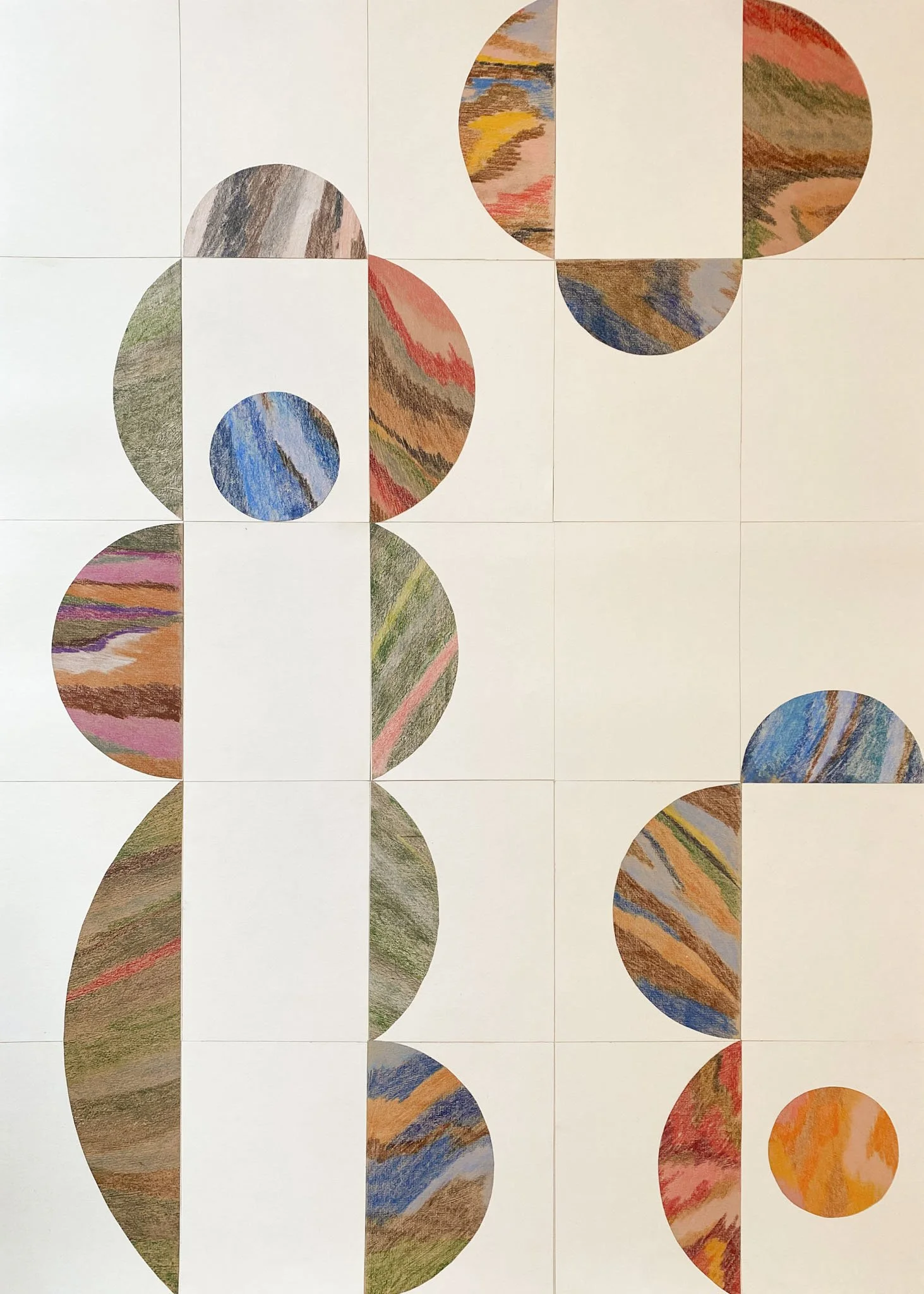Repetition as Language: The Comfort of Pattern in My Work
Repetition has always been at the heart of my practice.
In my drawings, collages, and paintings, shapes return again and again : semicircles, stripes, lines, gradients and specially full circles, repeating like quiet rhythms that guide the viewer’s eye. For me, these are not only visual structures; they are systems of balance and ways of regulating both perception and clear thoughts.
Patterns are how I think. They are how I see relationships between colors, shapes, emotions, and memories. In repetition, I find variation. A small shift in proportion, color, or distance becomes meaningful, even profound. It’s a reminder that sameness is never truly static.
In many of my works, I explore how minimal changes change the whole rhythm of a composition , how a single difference can shift balance, mood, or tension. This explains the way I process the world: through noticing the smallest details, the subtle differences that others might overlook.
The repetition allows space for observation not only as control, but as intimacy. It’s an act of deep attention inside predictability.
Predictability is often misunderstood. For me, it’s not about fear of change, it’s about creating an environment where change can happen safely. Within repetition, there’s room to experiment, to evolve.
Each repeated pattern becomes a container that holds controlled uncertainty. The shapes return, but never exactly the same. The rhythm gives me permission to explore subtle changes without chaos. This is why I return, again and again, to grids, arcs, and modular compositions: they are frameworks that hold emotion and thought together.
It gives me a sense of time I can trust. The process becomes meditative, a sequence of gestures that slows everything down, allowing transformation to unfold gradually.
Although my work often leans toward minimalism and geometric abstraction, the repetition in it is never mechanical. It carries the trace of the hand, small irregularities, shifts in pressure, variations in line. These imperfections are the heartbeat of the work. They remind both me and the viewer that behind the structure there is a person, someone balancing order and emotion, precision and vulnerability. It’s not about perfect symmetry, but about the living rhythm of doing something again and again with attention and care.
But beyond regulation, repetition is also reflection. Each stroke, each return of a pattern, is an act of noticing: how does this mark differ from the last? How does change feel in a system built on constancy? This duality [ stability and variation ] is what fascinates me endlessly.


